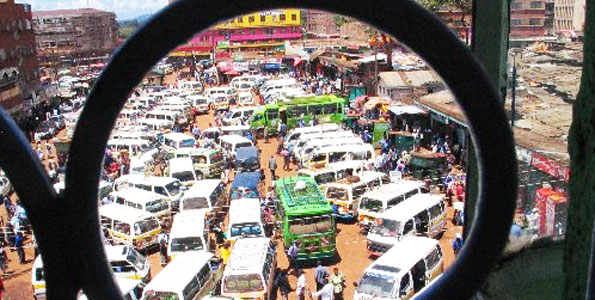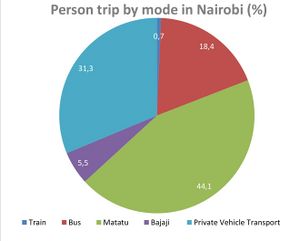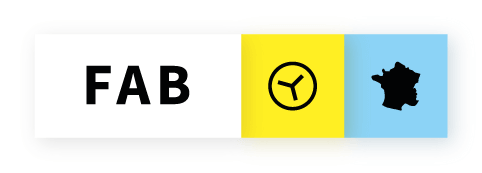Digital Matatus
Short Description: Mapping of the paratransit network in Nairobi
Description: In Nairobi, more than 2 million of trip occurred per day, and more than 700 000 people use the Matatu’s fleet every day (composed of several types of vehicles with 14-seater van, 25-30 seater minibuses and 33-45 seater buses)
The experience was drove by a group of universities (Nairobi, MIT and Columbia) to show how smartphone could help to collect data from informal transport system, and, with the financial help of the Rockefeller Foundation, they begin to map the 135 routes that compose the Matatu system in order to produce a transport map and a GTFS feed.
Place for experimentation : Nairobi
Map (on development) :Web Site: http://www.digitalmatatus.com/about.html
Organisations involved in the project: Digital Matatus Team, Rockefeller Foundation
Organisation interested to participate / use deliverables: Matatu's drivers and owners, Nairobi population
Contributors (people): KLOPP Jackie, WILLIAMS Sarah
Tags: Data collection, Nairobi, Digital Matatu, Modified GTFS, Informal Transport, Paratransit System
Theme: Données ouvertes, Traces de mobilité et des données associées, Ecoles et Etudiants, Logiciel Libre, Africa
Referent (people):
Challenge associated to your project : Using smartphones for mapping an informal transport network
Common(s) used:MyTracks, TransitWand App
Common(s) produced: FlashCast Sonar, Ma3Route
Linked Communauty of interest: Communauté autour des traces de mobilité et des données associées
Advisor, mentor useful for the project:
Project deliverables:
Digital space for discussion (mailing list):
Chat for direct discussion:
Trello for actions:
Digital space to share files (drive, wiki, etc...): https://git.digitaltransport4africa.org/cities/nairobi
Needs identified:
Complements:
Next step:
Others informations:
Data Collection Process[modifier | modifier le wikicode]
After a phase of identification of the matatu’s roads and stops, the students of the Nairobi’s University began to geo localize the stops and to collect the GPS Trace of the routes using MyTracks and TransitWand App.
Data processing and communication[modifier | modifier le wikicode]
As this project was one of the first in this category, the team had to develop a technic for filing up the GTFS feed with data from a paratransit network. As there is no data available for schedule (stop_times.txt ) - they used frequencies of trips from the main terminus (at and off-peak hours) – they had to indicate those differences in the GTFS data format. Then, there was a phase of identification and nomenclature of the different routes and stops that has been collected before producing the GTFS. Even if the stop_times field was composed of estimation and the fare one need some more average information, the GTFS was finally incorporated to some trip planner app like Transit or Google Maps and some application that provide routing information were developed like Ma3Route and FlashCast Sonar. The last phase was the production of the Nairobi transport map that regroup stop name and position, point of interest and the Matatu’s line. For the design of the map, they redraw the route on a grid base using 45 and 90° angle.
Links[modifier | modifier le wikicode]
GTFS
Map
Papers
Journal of Transport Geography - The digital matatu project: Using cell phones to create an open source



 Français
Français English
English Italiano
Italiano